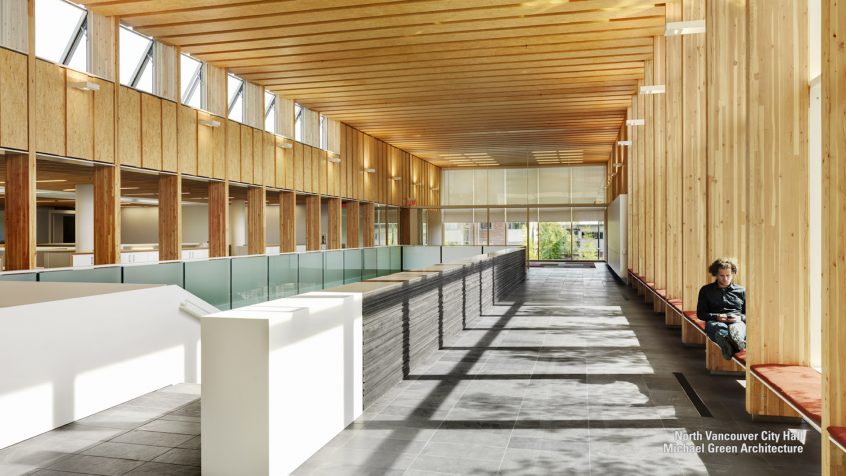Cross-laminated timber may be getting all the attention these days, but CLT is not the only new use for wood, one of the most incredible and versatile building materials in the world. Scientists recently discovered a process that uses a chemical bath and a hot-press to densify wood, making it stronger than steel.
The process, and others like it, could make the humble material an eco-friendly alternative to using plastics and metals in the manufacture of cars and buildings.
“It’s a new class of materials with great potential,” says Li Teng, a mechanics specialist at the University of Maryland in College Park and a co-author of the study published on 7 February in Nature.
More details from Scientific American:
Besides taking a star turn in buildings and vehicles, the (densified) substance could even be used to make bullet-resistant armor plates.
Wood is abundant and relatively low-cost—it literally grows on trees. And although it has been used for millennia to build everything from furniture to homes and larger structures, untreated wood is rarely as strong as metals used in construction. Researchers have long tried to enhance its strength, especially by compressing and “densifying” it, says Liangbing Hu, a materials scientist at the University of Maryland, College Park. But densified wood tends to weaken and spring back toward its original size and shape, especially in humid conditions.
Now, Hu and his colleagues say they have come up with a better way to densify wood, which they report in the February 7 Nature.
…The results are impressive. The team’s compressed wood is three times as dense as the untreated substance, Hu says, adding that its resistance to being ripped apart is increased more than 10-fold. It also can become about 50 times more resistant to compression and almost 20 times as stiff. The densified wood is also substantially harder, more scratch-resistant and more impact-resistant. It can be molded into almost any shape. Perhaps most importantly, the densified wood is also moisture-resistant: In lab tests, compressed samples exposed to extreme humidity for more than five days swelled less than 10 percent—and in subsequent tests, Hu says, a simple coat of paint eliminated that swelling entirely.
A five-layer, plywoodlike sandwich of densified wood stopped simulated bullets fired into the material—a result Hu and his colleagues suggest could lead to low-cost armor. The material does not protect quite as well as a Kevlar sheet of the same thickness—but it only costs about 5 percent as much, he notes.
As Scientific American points out, this isn’t the first major recent breakthrough in altering wood. Swedish researchers announced they have figured out a way to make wood transparent.
One team, led by materials scientist Lars Berglund at the KTH Royal Institute of Technology in Stockholm, has come up with a way to make windowpanes of wood. The first step in that process (as in Hu’s) is to remove lignin, a substance that not only stiffens wood but also creates its brownish color. The researchers infuse the lignin-free wood with a polymer called methyl methacrylate (MMA), a material better known by trade names such as Plexiglas and Lucite.
Because MMA’s index of refraction (a measure of how much it bends light) matches that of the lignin-free wood, rays of light pass right through the MMA-infused composite instead of getting bounced around inside empty cells. This renders the material remarkably clear. Berglund and his team described their feat two years ago in Biomacromolecules. Coincidentally, at the same time Hu and his colleagues were also developing a method for rendering wood transparent.
Research like Hu’s and Berglund’s can only add to the wild prospects for the future of materials science. Someday soon it might be possible to live in a home made almost completely from one of Earth’s most abundant and versatile building materials—from floors to rafters, walls to windows. In the garage there may be a car whose chassis and bumpers could be composed of densified wood rather than steel and plastic—knock on wood.
